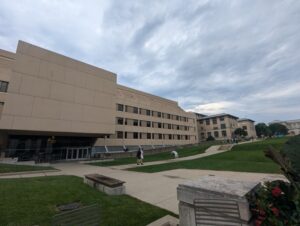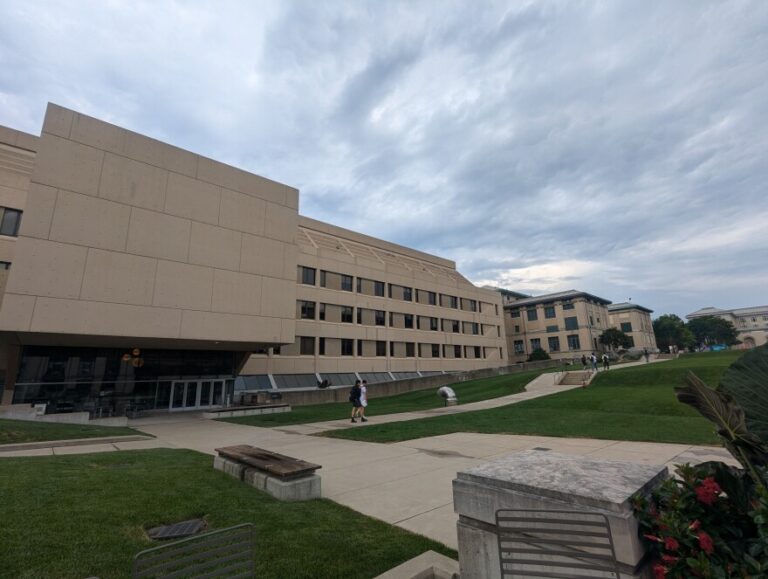A pioneering team of researchers from NYU Tandon School of Engineering, led by Weiqiang Chen, has developed a groundbreaking device that could revolutionize the testing and customization of blood cancer treatments. The innovative “leukemia-on-a-chip” device, which is the size of a microscope slide, is the first to successfully integrate the physical structure of bone marrow with a functioning human immune system. This advancement is poised to accelerate the development of new immunotherapies significantly.
This breakthrough comes at a critical juncture, as the U.S. Food and Drug Administration (FDA) has recently announced plans to phase out animal testing requirements for monoclonal antibodies and other drugs. The FDA’s roadmap aims to reduce animal testing in preclinical safety studies, highlighting the need for alternative testing methods like the one developed by the NYU team.
Transforming Immunotherapy with Real-Time Observations
Published in the journal Nature Biomedical Engineering, the new technology allows scientists to observe in real-time how immunotherapy drugs interact with cancer cells in an environment that closely mimics the human body. This capability represents a significant leap forward in testing methods, as traditional approaches have struggled to replicate the complex interactions between cancer and immune cells.
“We can now watch cancer treatments unfold as they would in a patient, but under completely controlled conditions without animal experimentation,” said Chen, professor of mechanical and aerospace engineering at NYU Tandon.
Challenges in Current Testing Methods
Chimeric Antigen Receptor T-cell therapy, or CAR T-cell therapy, is a promising approach for treating certain blood cancers. It involves genetically engineering a patient’s immune cells to target cancer and then reintroducing them into the patient’s body. Despite its potential, the therapy faces challenges: nearly half of patients relapse, and many experience severe side effects such as cytokine release syndrome.
Traditional testing methods, including animal models, are time-consuming, difficult to monitor, and often fail to accurately mimic the human immune system’s responses. Standard laboratory tests also fall short in replicating the complex environment where cancer and immune cells interact.
Recreating the Bone Marrow Environment
The new device ingeniously recreates three regions of bone marrow where leukemia develops: blood vessels, the surrounding marrow cavity, and the outer bone lining. When populated with patient bone marrow cells, the system self-organizes, producing structural proteins like collagen, fibronectin, and laminin. This not only creates the physical structure but also retains the complex immune environment of the tissue.
Using advanced imaging techniques, researchers observed individual immune cells as they moved through blood vessels, recognized cancer cells, and eliminated them. This clarity in observation was previously unattainable in living systems. The team could track how fast CAR T-cells traveled, noting that these engineered immune cells slow down to engage and destroy cancer cells upon detection.
“We observed immune cells patrolling their environment, making contact with cancer cells, and killing them one by one,” Chen explained.
The Bystander Effect and Clinical Scenarios
Interestingly, the researchers discovered that engineered immune cells activate other immune cells not directly targeted by the therapy, a phenomenon known as the “bystander effect.” This effect may contribute to both the effectiveness and side effects of the treatment.
By manipulating the system, the team recreated common clinical scenarios seen in patients, such as complete remission, treatment resistance, and initial response followed by relapse. Their testing revealed that newer “fourth-generation” CAR T-cells with enhanced design features performed better than standard versions, particularly at lower doses.
Implications for Personalized Medicine
While animal models require months of preparation, the leukemia chip can be assembled in half a day and supports two-week experiments. This efficiency could eventually allow doctors to test a patient’s cancer cells against different therapy designs before treatment begins.
“Instead of a one-size-fits-all approach, we could identify which specific treatment would work best for each patient,” Chen noted.
The researchers developed a “matrix-based analytical and integrative index” to evaluate the performance of different CAR T-cell products, analyzing various aspects of immune response in different scenarios. This comprehensive analysis could provide a more accurate prediction of which therapies will succeed in patients.
The Collaborative Effort and Future Prospects
Along with Chen, the paper’s authors include Chao Ma, Huishu Wang, Lunan Liu, and Jie Tong of NYU Tandon; Matthew T. Witkowski of the University of Colorado Anschutz Medical Campus; Iannis Aifantis of NYU Grossman School of Medicine; and Saba Ghassemi of the University of Pennsylvania. The work was supported by the National Science Foundation, National Institutes of Health, Cancer Research Institute, Leukemia & Lymphoma Society, National Cancer Institute, Alex’s Lemonade Stand Cancer Research Foundation, St. Baldrick’s Foundation, and other organizations.
The development of the leukemia-on-a-chip device marks a significant milestone in the pursuit of personalized medicine. As the technology advances, it holds the promise of transforming how we approach the treatment of blood cancers, potentially leading to more effective and tailored therapies for patients worldwide.


























